Lower Back Pain When Running—How To Prevent Back Injuries
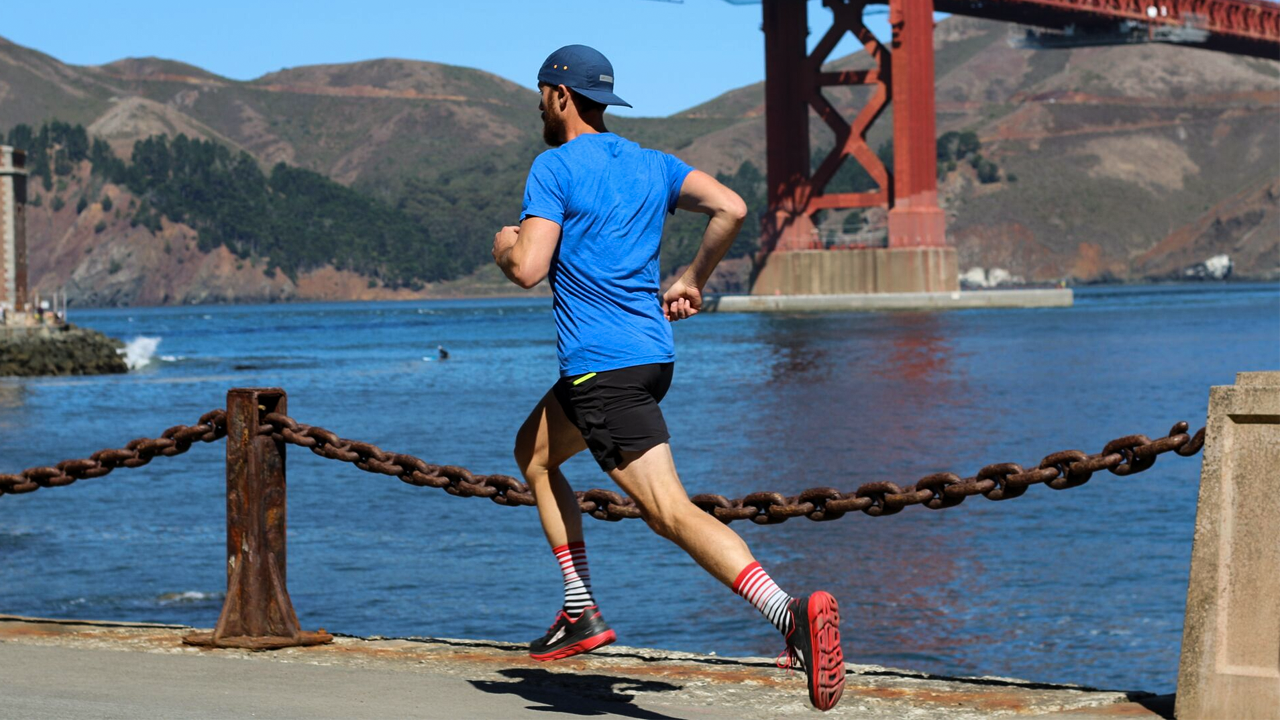
Lower back pain after running—it’s the worst. Most people experience it at some point or another, whether they're runners or not. You picked something heavy up incorrectly, you regularly spend 8 hours of your day in a chair, or maybe it's because of some issues in your posture and body mechanics.
If you’re a runner, your running form could play a massive role in whether your lower back muscles protest the miles you put in.
Running with lower back pain can make even a jog around the park excruciating.
But the bottom line is: you don't have to live with lower back pain—before, during, or after a run. There are things you can do to fix it:
- Strength training
- Correcting poor posture
- Working on mobility
These are all ways to get back to pain-free life and running. Read on to understand how weak and tight muscles contribute to your pain, and follow our tips to help shore up those trouble areas.
Why Does My Lower Back Hurt When I Run?
Why does your lower back hurt when you run?
It’s worth mentioning that chronic pain and running injuries don’t usually come out of nowhere. You may have some training gaps if you're experiencing lower back pain while running.
Perhaps you've had less time lately for all your workouts so you've just been running and have skipped any cross training. Or maybe after a run, you just jump in the car and head home, skipping your cooldown and post-run mobility. It could also be that your lifestyle is quite sedentary, and it's time to make changes.
Let's consider some potential causes and explanations:
- Poor Running Form: Improper posture or biomechanics can lead to excessive strain on the lower back. Overstriding, excessive forward lean, or running with a rigid torso can contribute to this pain.
- Weak Core Muscles: The core isn't just about the abs; it encompasses the entire trunk, including the muscles surrounding and supporting the spine. If the core muscles are weak, they might not support the spine adequately during the repetitive impact of running, leading to lower back pain.
- Tight Hip Flexors or Hamstrings: Tightness in hip flexors can cause an anterior pelvic tilt, which can increase the arch in your lower back, leading to pain. Similarly, tight hamstrings can pull down on the pelvis, stressing the lower back.
- Previous Injury or Underlying Conditions: Conditions like herniated discs, spondylolisthesis, spinal stenosis, or previous back injuries can be exacerbated by running.
- Overuse or Sudden Increase in Activity: Rapidly increasing mileage, running intensity, or not allowing adequate recovery can lead to overuse injuries, which can manifest as lower back pain.
- Inadequate Footwear: Worn-out or unsupportive running shoes might not absorb shock adequately or might not provide the necessary support, leading to misalignment and strain in the back.
- Uneven Running Surfaces: Running on slanted surfaces, such as a beach or the side of a road, can cause one leg to be higher than the other for extended periods, potentially leading to muscular imbalances and back pain.
- Other Muscular Imbalances: Weak glutes, for instance, can cause the surrounding muscles, like those in the lower back, to compensate and become overworked.
- Poor Strength Training Technique: If you incorporate strength training into your routine (as you should), improper form, especially with exercises like squats or deadlifts, can strain the lower back.
Can Running Hurt Your Back?
Sometimes, but probably not in the way you’re thinking. Running highlights our bodies’ efficiencies and deficiencies. The weakness you have that’s leading to lower back pain isn’t caused by running—but running illuminates it more clearly.
Don’t get down on yourself. Lower back pain from running can be debilitating. Still, it's a simple process to shore up those gaps with a little strength and mobility work.
With one of our favorite core exercises and a dynamic mobility drill, you'll have two go-to moves that are easy to complete, whether at the trailhead, park, or your living room.
Please remember that we're online coaches, not online doctors. If you're experiencing intense lower back pain, nerve pain such as sciatica,, or other symptoms beyond those described in this article, please seek out medical advice or physical therapy for qualified help.
7 Ways to Fix Running With Lower Back Pain
1. Strengthen The Core To Beat Lower Back Pain When Running
One common culprit of low back pain is weakness through the core muscles, more specifically the deep stabilizer muscles. These muscles are responsible for keeping us upright and balanced with minimal rotation side-to-side or back-and-forth and have attachment points throughout the spine and pelvis. A strong and stable core also helps us absorb the impact of our daily activities, particularly running. As thousands of steps build up throughout a run, a strong core will provide shock absorption for your body.
Less shock absorption isn't the only downside of a week core. Your posture will also likely be affected. People tend to default to an overextended, mildly arched lower back when the core is weak since those stabilizing muscles are disengaged. Not only does this lead to instability throughout your body, but it also hinders your ability to engage your glutes. These muscle powerhouses are essential to all athletes and runners. Strengthening the core and correcting this arch to find a more neutral spine position is critical to keep running long-term and injury-free.
Let's experiment with spinal positioning and how it affects your glute and core engagement to get a better understanding of how to prevent lower back pain when running (or just chasing your dog through the park!)
2. Test Your Glute Engagement
To find that neutral spine position, start with your glutes.
- Stand as you normally would, feet hip or shoulder-width apart.
- Then squeeze your butt to fire your glutes. You should immediately feel your pelvis shift slightly forward.
- You'll probably also feel your core muscles engage, even if you aren't actively trying to flex them.
Check out our article on hip posture and neutral pelvis to learn even more.
As you work through the following movements, keep the sensation of a neutral pelvis and engaged glutes in mind. That posture will help you get the most out of the two drills, which will, in turn, improve your running.
3. Develop Core Strength With A Hollow Body Hold
This drill will put another variation on that engagement test. This drill aims to turn on those deep abdominal muscles that support and protect your spine from defaulting to a dangerous position. Additionally, the extra help from your core will take some of the load off the lower back muscles, which, if left to absorb the impact of running on its own, can easily lead to repetitive stress and injury.
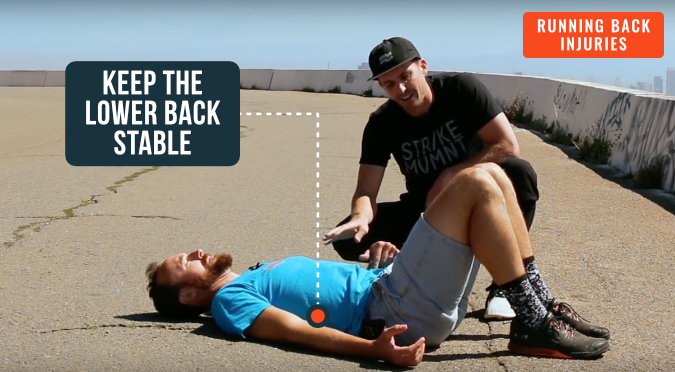
- Lie on your back with your feet flat on the ground.
- Lift your legs up to create a “table top” position, both legs bent at a 90-degree angle,
- Knees should be directly over the hips, and your head is resting on the ground.
- The low back should be pressed securely into the ground. You shouldn't be able to fit your hand between your lower back and the ground.
Next, you'll add some challenge to the position and really test your core engagement.
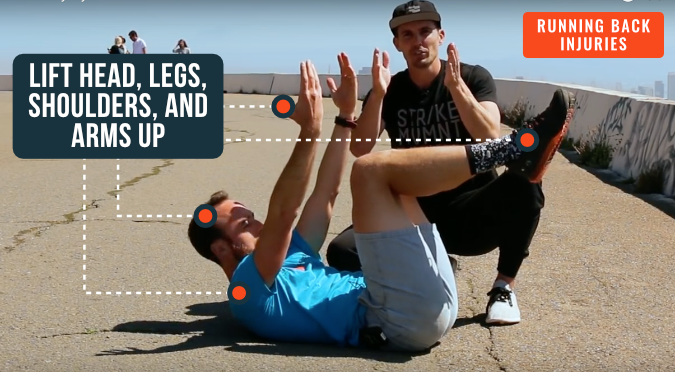
- Peel the head and shoulders off the ground, keeping arms into your sides but lifted 2 inches off the ground, palms up.
- You can raise the arms above your hips, perpendicular to the ground.
- Try extending one leg, then both legs.
- Play with variations of just legs extended, or one arm and opposite leg, etc.
- Notice how the different variations affect the demand on your core, just as when you change position while running.
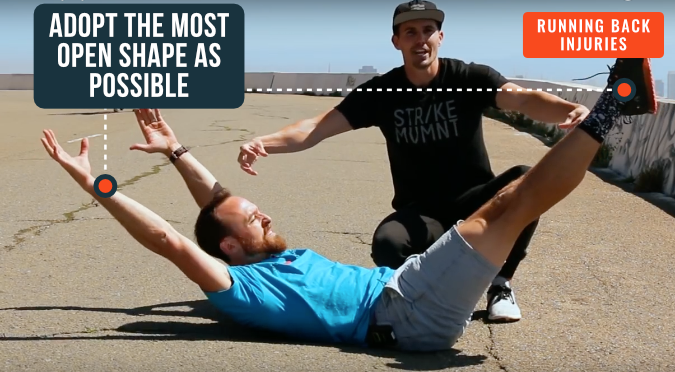
The only rule is that your low back MUST, MUST, MUST stay glued to the ground! This will keep your lower back safe and stable by avoiding hyperextension and compression in the spine.
- Start by holding your chosen position for 10 seconds, for 6 rounds total. Increase time as needed.
If you’re looking for even more core movements, here are two more exercises guaranteed to put you to work.
4. Improve Hip Mobility to Ease Lower Back Pain When Running
The other part of the puzzle is your hips! They are undoubtedly tight and put extra pressure and strain on your spine. It's pretty common these days that when you aren't running or working out, you're sitting. Sitting in your car, at your desk, on your couch…, us too, sometimes.
Let’s think about what that means.
Your hip flexors are muscles that connect your pelvis to your lumbar spine. They consist of the psoas and the iliacus, and they work together to flex the hip joint and move your leg up toward your body. Every forward step you take recruits the hip flexor muscles. When you spend the day sitting, these muscles are in a shortened position. Then, when you stand upright, they lengthen. Suppose the hip flexors are tight from being in a shortened position for too long. In that case, they can pull forward on the pelvis when you're standing, increasing the tendency to tip it forward in an arched position.
Enter your chronic lower back pain and, thus, your lower back pain when running.
So, let’s work on your hip mobility up by targeting the hip flexors. Instead of a static stretch where you just hold a position without moving, this is a dynamic mobility drill. Running requires movement through the hips, not a static position. So we'll replicate that movement here with some rotation and reaching.
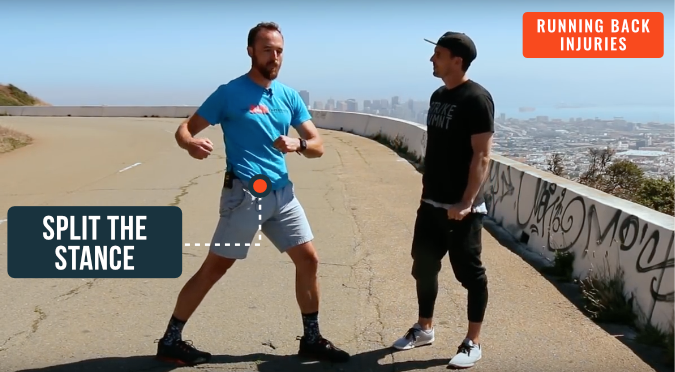
- Start by standing with a neutral pelvis as you practiced in the butt squeeze test
- From here, just start finding some rotations side to side, twisting the upper body from the lower body.
- You should start feeling a light stretch through the front of the hips.
- Continue rotating the upper body, side to side.
- From here, go ahead and put your right leg back behind you, finding a shallow lunge position.
Here are a few ways to increase the demand:
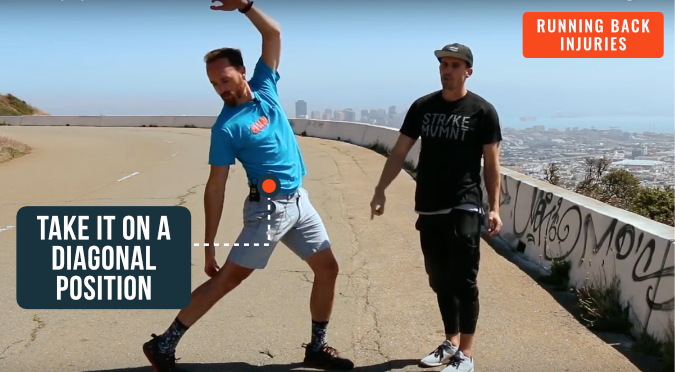
- Extend the arms to increase the range of motion, emphasizing the twist towards the right leg.
- Try holding one arm higher and the other lower to move contralateral (opposite arm with opposite leg)
- Find an increasingly larger range of twist over your left side, trying to reach that right glute of the extended back leg, then that hamstring, then the knee, then the ankle…you get the idea.
Ultimately, you want to create a dynamic movement that counteracts the seated position we spend so much time in.
- Accumulate up to 30 twists per side, starting from a small range of motion and increasing from there.
Including these two exercises in your running training will definitely help in both rehabbing AND preventing lower back pain when running!
5. Fix Back Pain After Running With This Mobility Drill
Here's a bonus video featuring Coach Holly and her favorite way to release the hip flexor muscles using a lacrosse ball and a kettlebell. The video will start with this mobility drill, but you'll learn a lot about your hips if you watch the full video!
6. See a Specialist
Seeking the expertise of a specialist when faced with running-related injuries or persistent pain is crucial.
A specialist will have extensive training and experience in diagnosing specific issues, which is especially important if you're facing a problem that is not resolving with general self-care or rest.
Every individual is unique, and what works for one person might not work for another. A specialist can tailor rehabilitation and treatment plans to your specific needs.
Addressing your lower back pain early on can prevent it from becoming chronic, which can be harder to treat and can sideline you for a longer period.
If you've been injured and your lower back hurts, a specialist can provide guidance on when and how to safely return to running, minimizing the risk of re-injury.
7. Gradual Progression
Gradual progression is a cornerstone principle in sports and exercise to reduce the risk of injury, including lower back pain in runners.
When you increase your running load too quickly, muscles don't have enough time to adapt to the new demands. Gradual progression allows muscles, including those supporting your spine, to strengthen progressively, reducing the risk of overuse injuries and strains.
Bones, tendons, ligaments, and joints need time to adjust to the increased impact and load. A sudden increase in activity can lead to stress fractures or joint problems.
Gradually increasing your distance or speed allows time for your body to adapt its mechanics. Poor running form, which can be exacerbated by fatigue from doing too much too soon, often contributes to lower back pain.
As you progress slowly, you give your core muscles a chance to strengthen and stabilize the spine. A robust and engaged core is essential in preventing lower back pain.
You Don’t Have to Run With Lower Back Pain
Running with lower back pain doesn’t have to be a forever sentencing. You can do something about it and get back to smooth, pain-free running—but it’ll take action and commitment.
Follow the workouts and advice in this article to fix your runners back.
And, again, also get medical help and advice if conditions worsen or you’re not seeing any progress. Lower back pain after running is common, but that doesn’t mean it has to be acceptable. Do something about it!
For even more training, be sure to download our mobile app for interactive workouts, full training plans, and a lively community of fellow TRE runners.
